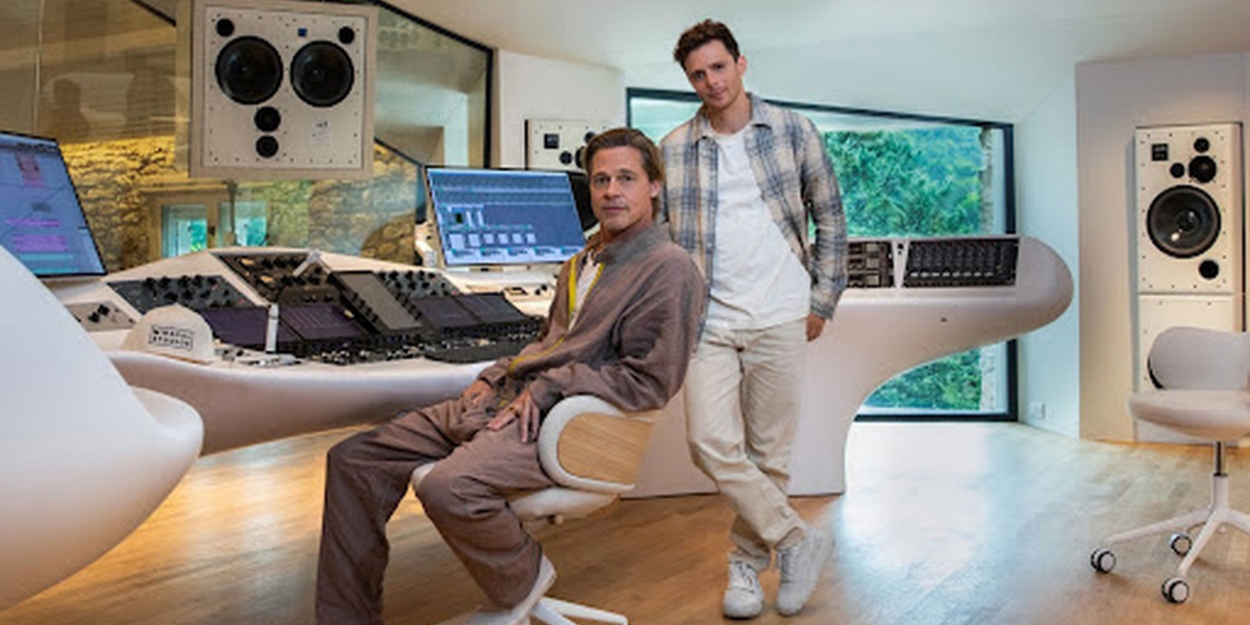Brad Pitt & Damien Quintard Reopen Legendary Recording Studio Miraval Studios
Miraval Studios now offers unrivaled amenities, in and out of the studio.

Miraval Studios at the famed Château Miraval in the South of France has officially reopened its doors after a major renovation plotted and overseen by Miraval Estate's owner Brad Pitt and EMMY-winning French producer Damien Quintard.
Completed in less than a year's time, the renovation has revived a world-class space for the creation of music recordings, film scoring and editing, and a host of multimedia creative endeavors. As revealed in Billboard's new cover story on the studio, four-time GRAMMY-winning legend Sade was the first artist to record new music at Miraval, which will appear on the long-awaited follow-up to her 2010 release "Soldier of Love".
In 1977, the estate's then-owner, French pianist and composer Jacques Loussier, built a state-of-the-art recording studio on the property, previously called Studio Miraval, which went on to host sessions for Pink Floyd's "The Wall," AC/DC, The Cure, Sting, Sade and The Cranberries, among others. The studio was active into the early 2000s but sat unused for nearly two decades, until now. Pitt and Quintard have reopened the completely redesigned and updated Miraval Studios for the future, honoring the past while pushing forward for innovation in the recording industry.
Miraval Studios now offers unrivaled amenities, in and out of the studio. In addition to original gear such as the SSL 4000 G+, on which so many classic albums were recorded, the studio is built around The Spaceship (a desk designed by Quintard and Pitt with hybrid analog/digital capacities), while boasting the largest fully integrated Dolby Atmos Music system, as well as technology to handle pre-mixing for film and television. "No other studio in the world has this level of technology. Everything was custom made," Adrien Franchi, head of artist relations at DolbyFrance, told Le Figaro.
With its 25-foot ceilings, Studio One has a 100 square meter control room and 320 square meter live room that conserves what Quintard describes as the "heritage of the sound" of a space that delivered so many great records in the past. While preserving the legacy of the studio, Quintard's new design pushes the acoustics further. His design focused on an "organic sound" where "all the natural elements of the domain, the wood, the stones, define a warm and cocooning recording experience." "It really is a space where you can produce anything from pop and rock, to hip-hop and classical records," Quintard says.
Additionally, the live room houses Loussier's restored, 1860s-era Broadwood & Sons piano as well as other pianos and synths like a Bosendorfer from the 1980s or classics like Moogs, Junos and Solinas. The control room has deep acoustically absorbent finishes in the ceiling, rear wall and side walls, providing full-frequency sound control within the audible frequency range to ensure that the sound engineers can trust the sound they are hearing from the loudspeakers, without coloration or distortion from the room acoustics.
Elsewhere, there are recording booths, a blend of vintage and modern microphones with other rare gear, work stations for sound and video editing, a mezzanine overlooking the entire studio, a salt water swimming pool and a tower connected to the studio to house visiting bands and musicians on the property, be it for a day or a month. With the catering from the Château focusing on organic produce grown on the domain and artist lodging connected to nature, the recording experience is an immersion in the simplicity & authenticity of French Provence.
Few partners were better suited to making this dream a reality than Quintard, a musical prodigy and rising star in the recording industry. Having first come to fame in the world of classical music, Quintard has developed a signature approach that garnered an Emmy Award for his work on the Baku 2015 European Olympic Opening Ceremony. He has also produced artists such as Arca, Brian Eno, Parcels and Gaspard Augé (Justice), Teodor Currentzis and L'Impératrice among others.
"There were always plans to revamp the studio," Pitt tells Billboard. "It has great historical provenance and so we didn't want to do it until we could do something special." Quintard notes, "as a French engineer, it was a holy grail. Miraval is one of those legendary, iconic studios. But it wasn't until I came to Miraval that I understood how deep the roots go."
The decision to work together was an easy one, but the duo soon had a more challenging one to make: whether to move ahead with Miraval in its current state or, essentially, start from scratch. Luckily, even after nearly 20 years of disuse, the equipment was still in good working order, but Quintard saw aesthetic possibilities beyond the extant design of the studio.
"It was important for us to preserve all the analog technology that was here, but to also fully incorporate the best digital technology of today," he says. "Making a desk that incorporates both analog and digital really allows the artist to use the best of both worlds in a fresh and new way."
"We wanted to create a space where you can be free and it was in that spirit that we approached it - 'let's make a sanctuary,'" says Pitt. Of the design Quintard notes, "for that connection with nature we made sure we could have a space where the light comes in from everywhere. We wanted to achieve an organic sound using the wood and the stones of the domain and to make something super inspiring." "I'm really excited to see what music comes out of here," reflected Pitt.
Photo Credit: Hélène Hadjiyianni
Comments
Videos

